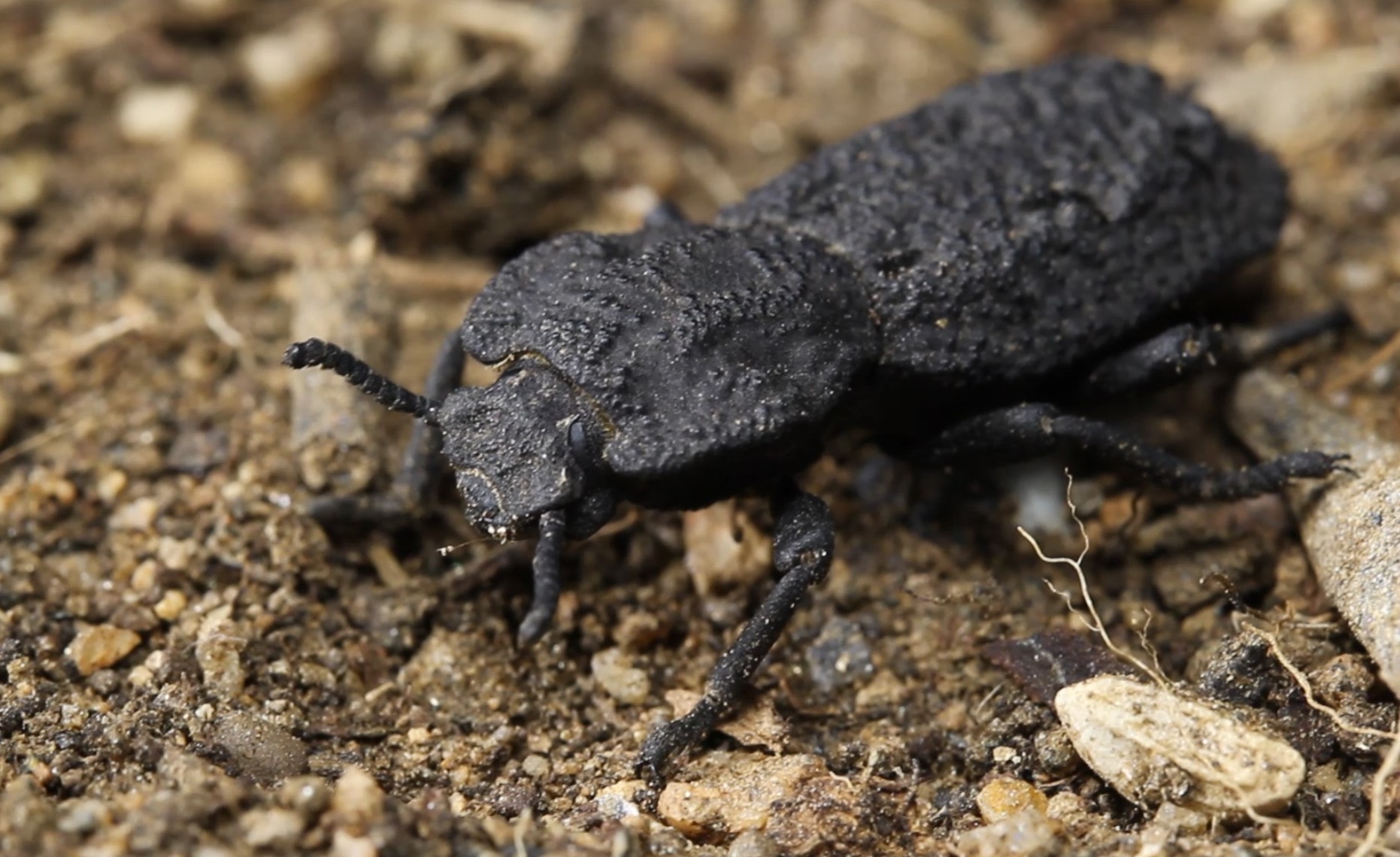Media release
From: Springer NatureInsights into what makes the exoskeleton of the diabolical ironclad beetle so strong are published in Nature this week. The findings, which help to explain the beetle’s ability to survive huge crushing forces, may have applications in construction and engineering fields such as aeronautics.
The diabolical ironclad beetle is an oak-dwelling species, primarily found on the western coast of North America. Lacking the ability to fly away from danger, this insect has crush-resistant exoskeletal forewings (called elytra), which means that it is able to withstand crushing and piercing strikes from predators and can survive being run over by vehicles. This strength has also presented challenges for entomologists trying to use standard steel pins to mount the beetles in display cases
David Kisailus and colleagues report the structural features and material composition of the elytra, which allow the beetle to withstand forces of up to 149 newtons (approximately 39,000 times its body weight). Using advanced microscopy, spectroscopy and mechanical testing, the authors observed a series of interlocked jigsaw-shaped joints at the middle of the elytra. They found that the geometry of these blades and their laminated microstructure provide excellent mechanical interlocking and toughening of the exoskeleton.
To test the potential of this geometric structure as a robust mechanical fastener for joining different materials (such as plastics and metal), similar to that required in turbines in the aerospace industry, the authors constructed a series of joints made of metal and composites that mimic the structures observed in the beetle. They found that their designs provided enhanced strength and significantly increased toughness compared to a commonly used engineering joint.


